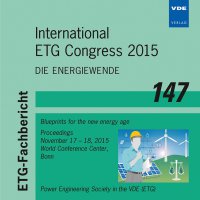“Energiewende” and flexible gas fired power generation
Conference: International ETG Congress 2015 - Die Energiewende - Blueprints for the new energy age
11/17/2015 - 11/18/2015 at Bonn, Germany
Proceedings: International ETG Congress 2015
Pages: 6Language: englishTyp: PDF
Personal VDE Members are entitled to a 10% discount on this title
Authors:
Lenk, Uwe; Pyc, Ireneusz (Siemens Power & Gas, Erlangen, Germany)
Steinke, Florian (Siemens Corporate Technologies, Munich, Germany)
Abstract:
The German “Energiewende” is currently in a critical phase. Three major energy consumption and conversion sectors: heat, electricity and mobility face transformation challenges, which are targeting the fulfilment of governmental CO2 reduction targets. The electricity sector, one of the forerunners and major “Energiewende” pillars, passes a phase of political and economic challenges concerning suitable market design on the one side and necessary investments measures on the other side. Besides the expansion of electricity generation capacity based on renewable energy sources, the economical operation of flexible, gas-fired load control and back-up power plants is an essential condition for a successful system transformation. On the road to the envisioned long-term “Energiewende” targets, we identify three phases which will be playing an important role in the provisioning of reliable, affordable and zero/low emission power generation of the future. Phase 1 must address the development and implementation of a new, suitable electricity market design, which will enable future investment in thermal generation and storage capacities. Due to lack of economics very limited construction of new gas fired central power plants is expected in this phase. The flexibility of the existing units is generally sufficient in responding to the system requirements. Phase 2 will deploy advanced, “multimodal-ready” generation and storage technologies and provide enhanced flexible solutions to integrate higher amounts of volatile wind and solar power. In this phase an adoption of a new market design, honouring values of energy and plant availability will be indispensable. Bivalent supply patterns will involve broadly. Finally, phase 3 predominantly based on “sun” fuels, can be described in terms of multimodal supply patterns with close interlink between the supply systems for electricity, gas, heat, cooling, water and fuels for mobility. These supply patterns will allow a comprehensive integration of the largest amounts of renewable generation and will offer a strong improvement of overall system efficiency and economics.


